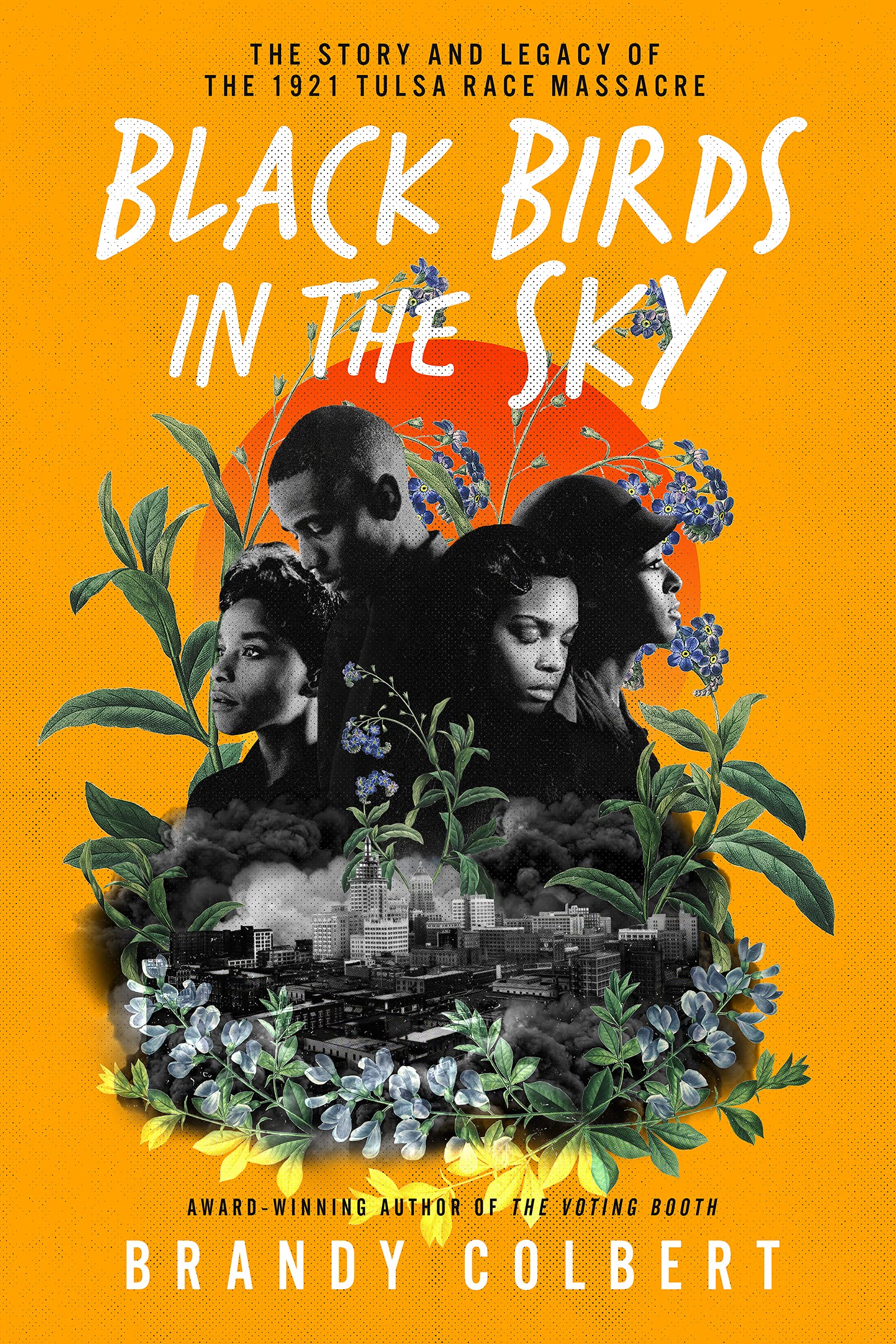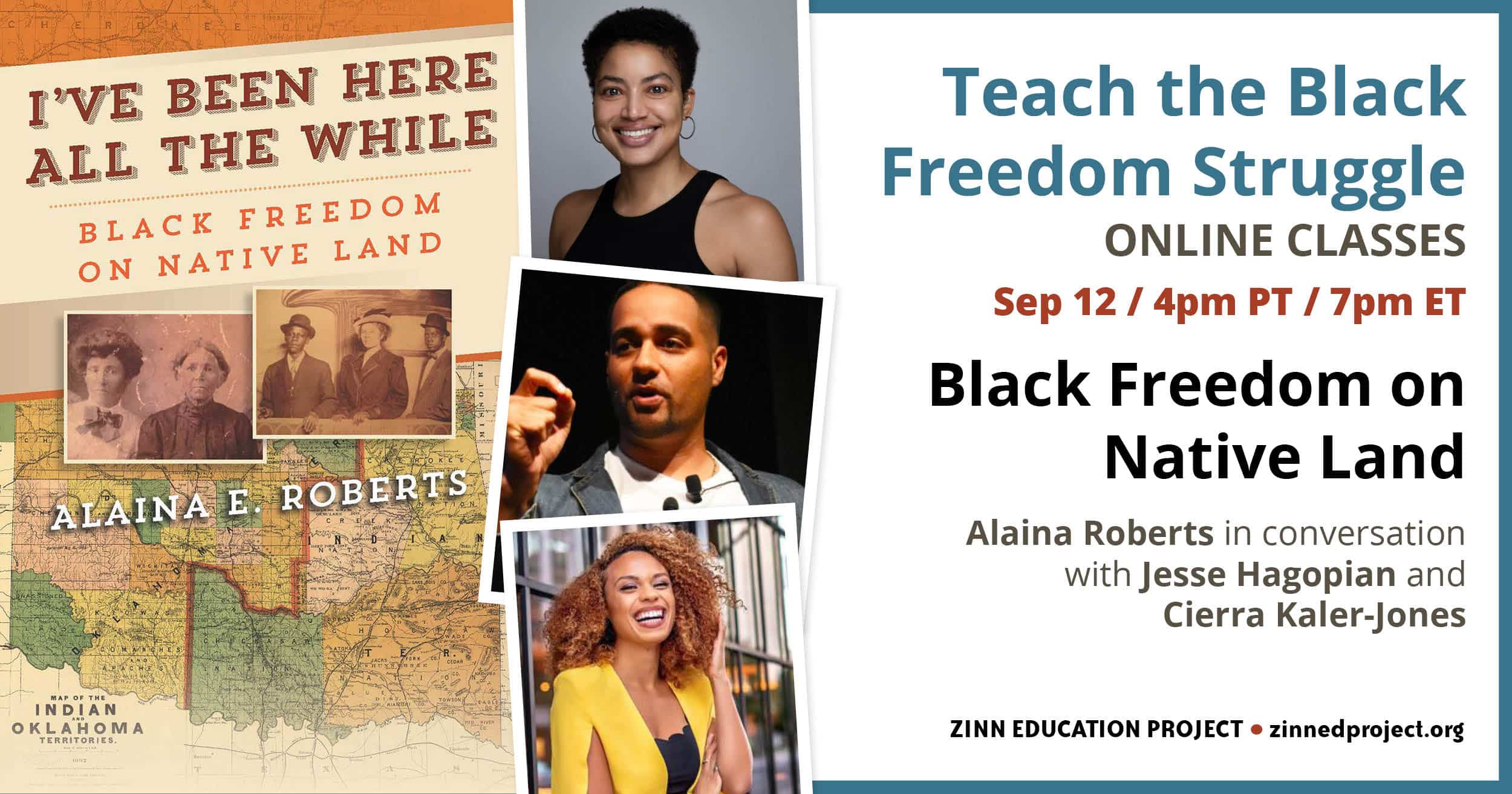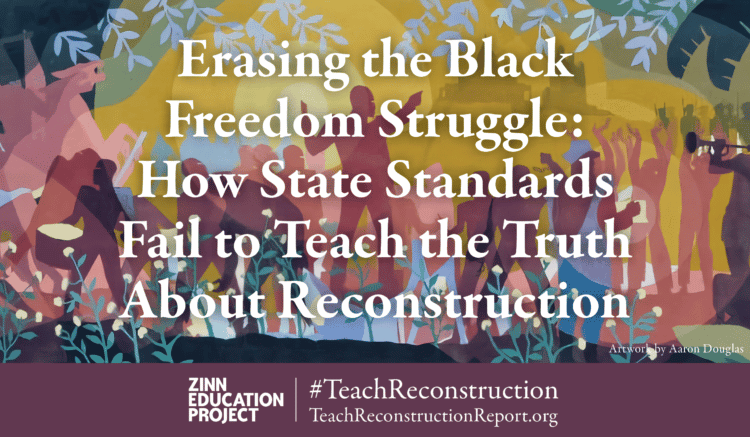 Perhaps no other symbol has more resonance in African American history than that of “40 acres and a mule” — the lost promise of Black reparations for slavery after the Civil War. In I’ve Been Here All the While, we meet the Black people who actually received this mythic 40 acres, the American settlers who coveted this land, and the Native Americans whose holdings it originated from.
Perhaps no other symbol has more resonance in African American history than that of “40 acres and a mule” — the lost promise of Black reparations for slavery after the Civil War. In I’ve Been Here All the While, we meet the Black people who actually received this mythic 40 acres, the American settlers who coveted this land, and the Native Americans whose holdings it originated from.
In nineteenth-century Indian Territory (modern-day Oklahoma), a story unfolds that ties African American and Native American history tightly together, revealing a western theatre of Civil War and Reconstruction, in which Cherokee, Choctaw, Chickasaw, Creek, and Seminole Indians, the Black people they enslaved, and African Americans and whites from the eastern United States fought military and rhetorical battles to lay claim to land that had been taken from others.
Through chapters that chart cycles of dispossession, land seizure, and settlement in Indian Territory, Alaina E. Roberts draws on archival research and family history to upend the traditional story of Reconstruction. She connects debates about Black freedom and Native American citizenship to westward expansion onto Native land. As Black, white, and Native people constructed ideas of race, belonging, and national identity, this part of the West became, for a short time, the last place where Black people could escape Jim Crow, finding land and exercising political rights, until Oklahoma statehood in 1907. [Publisher’s description.]
ISBN: 9780812253030 | University of Pennsylvania Press
Excerpts
These excerpts provide an example of the rich history and analysis offered by author Dr. Alaina Roberts.
“Belonging” is a term that many scholars have used as a sort of all-encompassing way to reference community, kinship, social welfare, or citizenship, at times respectively or all at once. The term resists a firm interpretation, as it is tied to the emotional connections of people in the past. And yet a desire for belonging shaped historical events, and so I deem it necessary for examination.
Though I use “belonging” throughout my narrative to refer to the community ties of all my historical actors, I most often use “belonging” throughout this book to signal that the Black and mixed-race characters in this story did not always seek citizenship, the legal conveyance of certain rights and privileges upon a person by a state. Rather, they often clung to kinship networks and natal communities in locations where citizenship was an impossibility in order to possess land. (p. 5)
This importance of land broadens the idea of Reconstruction that has been put forth in much historical scholarship: that Reconstruction revolved predominantly around the pursuit of political rights by people of African descent. What if we looked at Indian Territory as a space where a different sort of Reconstruction project occurred, one that allowed for the successful pursuit of land, and it was this undertaking that influenced Black people’s decisions and experiences? It is true that, constrained by institutional and individual racism as well as by the crushing poverty of newfound emancipation, Black settlers did not have access to the same economic and social resources that white settlers possessed.
But Indian Territory was a space upon which people of African descent projected their hopes and dreams of successful land claims. In their letters to Indian and white officials in Indian Territory and the United States, as well as in their communications to the U.S. Congress, Indian freedpeople and African Americans from the United States expressed a sense of ownership of Indian land and a willingness to take whatever steps were necessary to gain and maintain access to it, a key part of their sense of belonging in their respective all-Black or mixed-race communities. (p. 6)
The titular utterance, “I’ve been here all the while,” represents both words spoken verbatim by numerous Indian freedpeople as a means to denote their long-held connections to Indian Territory and the sentiment that each wave of settlers in the West took on. Land, kinship, and migration were mediums through which people of African, Native, white, and mixed Afro-Native descent navigated and claimed this new space.
In post-Civil War Indian Territory, white and Black women and men moved in to occupy and claim land upon which Native peoples still resided, and ideas of belonging and citizenship within American and within Indian nations were constructed simultaneously. Reconstruction’s promise allowed people of African descent to be part of this continued settlement and displacement, part of this continuous reimagining of Indian Territory. (p. 10)
This complex history is not an exotic, peripheral story; rather, it is central to our understanding of America today. Expanding our narratives of Reconstruction to incorporate Indian Territory and the framework of settler colonialism is essential to an understanding of U.S. history: we must see western Indian nations as important spaces in which the convergence of race, belonging, and citizenship paralleled, and was connected to the sociopolitical realities in the United States. (p. 11)
As the war ended and white and Black Americans agitated on the ground and looked to the federal government to take the next steps to recognize African Americans as equal citizens under the law through legal and political reform, people of African descent within Indian Territory looked to another aspect of their lives for fulfillment of the promises of freedom: land and community. We generally think of the experiences of African Americans after the Civil War in relation to (U.S.) citizenship and political rights, since in the absence of land redistribution these were the claims available to them. But for Indian freedpeople, actions taken by the secretary of the interior, his agents, and the Dawes Commission represent the last form that Reconstruction took in the West: the federal government’s intervention on behalf of Indian freedpeople, through which they obtained the greatest symbol of the era’s promise: land. (p. 45)
The establishment of churches and schools symbolized the determination of Indian freedpeople to create their own communities in the face of threats and violence during this liminal period in which they waited to be adopted as citizens of Indian nations and find out whether they would receive land they had applied for. Both their land and their citizenship depended on the Five Tribes and the United States upholding their treaty promises to them. These schools and churches formed the crux of communities that emphasized Black autonomy, allowing Indian freedpeople to create Black spaces within Indian nations. (p. 62, featured in Reconstruction report)
This book is about the meaning of freedom, about hopes — both dashed and realized — and about identity. The history of the American West is at the same time pervasive and esoteric. The images of the region — the (white) cowboy, the Plains Indian, the self-sufficient pioneer family — are known in places far outside of the United States, from Germany to Vietnam. Yet, the diverse peoples and narratives that make up “the West” remain obscured in many ways.
When Indians are thought of only as symbols of a passing era, running from inevitable American progress, this obscures the acculturation of the Five Tribes and their complicity in much of the culture and ideologies of the United States, including slavery, institutionalized racism, and individual prejudice; when people of African descent are confined to the South in our narratives of American history, this obscures the realities of Indian freedpeople’s enslavement, emancipation, resilience, and community building with other Black people in the West, creating places like Black Wall Street. (p. 138-139)
How do we recognize a more nuanced Reconstruction that enfolds varying definitions of Black freedom and Black involvement in settler colonialism? How do we define Indigeneity while allowing for migration and overlapping land claims? How do we grapple with the broad history of settler colonialism in North America? (p. 141)
Video
In the YouTube video below, Alaina Roberts discusses her family roots and ancestors in the Curiosity Stream episode “The Real Wild West.”










Twitter
Google plus
LinkedIn